Keywords
|
| CR, CRNs, dynamic spectrum access, routing, NS2 |
INTRODUCTION
|
| With increase demand of wireless operated electronic gadgets, there is tremendous research taken place in the fields like wireless communication, signal processing, VLSI. So, lots of wireless communication technologies have been deployed in personal area network to wide area network to fulfil users need. This has increased the use of radio spectrum. Thus radio spectrum is one of the most heavily used resources. The recent radio spectrum measurements show that the fixed spectrum allocation policy is not suitable for current wireless system [1]. Moreover, most of the licensed bands assigned for licensed users are under-utilized, many portions of the radio spectrum are not utilized for a significant period of time or in particular areas, while unlicensed bands used to operate by various well-known wireless technologies, such as Wi-Fi, cordless phones, Bluetooth, NFC (Near Field Communication), and so on, are always crowded, approved by Federal Communications Commission (FCC)’s experiment results [2]. Cognitive radio (CR) [3][4][5] is a important technology for future wireless communications and to solve the problems of limited availability of spectrum and spectrum underutilization as well as to address the increasing congestion in the unlicensed bands by enabling unlicensed users to opportunistically access the vacant portions of the spectrum bands, referred to as Spectrum Opportunities (SOP) [5], which is always statistically underutilized by licensed users (also known as primary users: PUs). CR networks are envisioned to provide high bandwidth to mobile users via heterogeneous wireless architectures and dynamic spectrum access techniques. This goal can be realized only through dynamic and efficient spectrum management techniques. CR networks, however, impose unique challenges due to the high fluctuation in the available spectrum, as well as the diverse quality of service (QoS) requirements of various applications. |
| In order to address these challenges, each CR user in the CR network must: |
| • Determine which portions of the spectrum are available |
| • Select the best available channel |
| • Coordinate access to this channel with other users |
| • Vacate the channel when a licensed user is detected [3] |
| These functionalities of cognitive radio networks enable spectrum-aware communication protocols. However, the dynamic use of the spectrum causes adverse effects on the performance of conventional communication protocols, which were developed considering a fixed frequency band for communication. The ultimate objective of the cognitive radio is to obtain the best available spectrum through cognitive capability and Reconfigurability. Since most of the spectrum is already assigned, the most important challenge is to share the licensed spectrum without interfering with the transmission of other licensed users as illustrated in Fig. 1. The cognitive radio enables the usage of temporally unused spectrum, which is referred to as spectrum hole or white space [4]. |
| In this paper, the different routing models for CRN routing are based on Network Simulator 2 (NS2), which is one of the most popular network simulators. NS2 provides many radio models, such as 802.11, 802.16, 802.15.3, 802.15.4, which can be used for cognitive radio network simulations. |
| The rest of the paper is organized as follows. Section II briefly describes the background and presents problem analysis in CRN routing. Section III shows the design and comparison of different routing models that are presented in NS2.The performance of different routing models are compared and presented in Section IV. Finally the paper is concluded in Section V. |
BACKGROUND AND PROBLEM ANALYSIS
|
| 1. BACKGROUND |
| The architecture of a CRN can be either infrastructure based or infrastructure less. In an infrastructure less CRN, the unlicensed users communicate with each other directly (i.e. in a peer-to-peer fashion) without requiring any base station. The communication can be either single-hop or multi-hop. For multi-hop communications, some unlicensed users can temporarily assume the role of relay stations as revealed in Fig. 2. |
| The two main characteristics considered in CRN are cognitive capability [7] and fluctuating nature of the available spectrum. |
| Cognitive capability: The portions of the spectrum that are unused at a specific time or location can be identified according to the real time environment, as shown in Fig. 1. A CR allows a cognitive user to access a spectrum hole unoccupied by a primary user (PU) and improve the spectrum utilization while reducing the whitespaces in the spectrum. Therefore, the best spectrum can be selected, shared with other users, and exploited without interference with the licensed user. |
| Spectrum Fluctuation: The available spectrum will be different during the entire communication process. A licensed spectrum may be used by the PUs at some times, but at other times, it is idle. Through the cognitive capability, the secondary user (SU) finds the spectrum that is available at the moment, and then is listed as the available spectrum. When the SUs use the idle licensed communication with other users, the PUs appears and need to use the licensed spectrum. The available set of spectrum for second uses is changed with the appearance of PUs. That's the fluctuating nature of available spectrum. |
PROBLEM ANALYSIS
|
| In view of the characteristics that are mentioned in background, they cause some problems for route selection. Here the main problems considered are namely, spectrum awareness, variability of available spectrum and the complexity of spectrum selection. |
| Spectrum Awareness: In a dynamic CRN, the PUs may use the channels for intermittent durations causing the need to change the routing paths. At such times, the routing protocol is faced with two options, i.e., change the physical regions through which the existing path passes or switch the channel altogether [8]. At this time, the routing protocol may: (i) switch channels within the same spectrum band, (ii) switch spectrum bands altogether, (iii) circumvent the affected region on the same channel, or (iv) continue along the shortest path in the same channel by adapting its transmission, if this path intersects regions of PU activity. Thus, there is a need to design new routing protocols that considers the spectrum sensing function, spectrum decision, MAC layer spectrum access technology and end-to-end performance requirements. |
| Variability: The set of available spectrum is dynamic due to the effects of PUs. The set of neighbours will be changed once the set of available channel is changed. If the routing protocol doesn't know the change, some problems in routing selection can be observed. As shown in Fig. 3, the red broken line is S1 and the green real line is S2. A is communicating with B in spectrum of S1, and in the meanwhile the primary users also need to use the S1.But the routing layer does not know the behaviour of PU and sends the data to B in S1 all the same. In fact, A should just use S2 to send the data. According to this example, the routing layer must know about the information of MAC layer, or the routing results are not dependent. |
| Complexity: In CR networks, some control information need to broadcast. Meanwhile, we need to reduce the redundant of network. With the requirements, we should choose a common channel [10] that, just one times, all nodes can receive the information from. However, the transmit scope and set of neighbours with different spectrum not the same, if we just use one control spectrum for nodes to exchange the routing information, sometimes, it may be not feasible. For example, Node X has A, B and C spectrum, Y has A, B, and Z has A, C. The scope of transmission is Rc > Rb > Ra. Three nodes all have the A spectrum, and we think A can be selected as the common channel. But, in fact, as the scope of transmission, the Node Z and Node X are not in the scope of spectrum A, so they can't communicate with A spectrum. This is the complexity problem when we select the available spectrum. |
DIFFERENT ROUTING MODELS
|
| In each routing model there are lots of modifications done in NS2. So before going to different routing models let’s see how a Normal Mobile Node looks like and how it works. |
| Fig. 4 shows the architecture of a Normal Mobile Node, which consists, below the “Routing Agent”, of a chain of modules, emulating the different protocol stack entities that any host would have in the real life: “Link Layer”, “MAC Protocol”, “ARP”, “Interface Queue”, “Network Interface”, all of them connected to the same shared wireless channel. In addition, the “Propagation Model” is used so as to simulate the effect of the real wireless channels on the transmitted signal; more specifically, the propagation loss is modelled, either in deterministic or a random way. |
| The packets arrive through the channel and travel through the different entities in ascending order; since the last module of every interface, the “Link Layer” is connected to the same common point the “Address Multiplexer”, all packets are handled by the appropriate agent (either the routing agent or the application). |
1. Multi Channel Routing Model (MCRM)
|
| Fig. 7 shows a Multi Channel Routing Model (MCRM), which contains multiple number of channels with multiple number of interfaces, in which each node within the same scenario could connect to a different number of channels (of the ones that had been previously defined). Routing agents may take advantage of the modified model, but legacy operation of the simulator will be preserved, so as to ensure backward compatibility. The MCRM doesn’t have the ability of CR. Even if the licensed spectrum is idle, the secondary user won’t be able to use the licensed spectrum. |
2. Cognitive Radio Network Routing Model (CRNRM)
|
| The channels represent the spectrum, that's to say, in CRNRM model shown in Fig. 8, there are multiple channels [11] [12] to identify the set of spectrum. In addition, the scope for licensed spectrum is not the same as the un-licensed spectrum. The idea of cross layer design [13] is introduced into this model. Routing agent is the key part in CRNRM model. Firstly, Routing agent identifies the primary user and the second user with a sub packet header. In addition, the routing protocol needs to use the channel information that is transferred by CRM. In Routing agent, the Ad hoc AODV routing protocol is amended, and variability of the spectrum is taken into account. CRM is served as the virtual sublayer of MAC and is the key part of the whole design. CRM has two main functions. On the one hand, CRM collaborates with routing agent. When the Routing agent selects the available spectrum, namely available channel, CRM can assign and switch the channel for the communication according to the control information of Routing agent. One the other hand, with cross-layer design, CRM need to transfer the channel information to Routing agent, according to the information, Routing agent can know about what channel can be used at the moment, that’s to say, Routing agent owns the ability of cognitive. Multi-channel is essential for CRNRM model. According to it, the set of available spectrum with available channel is abstracted. Through the Network Interface we can control the scope of channel and identify heterogeneous spectrum. |
3. Dynamic Spectrum Management Cognitive Radio Routing Model (DSMCRN)
|
| DSMCRM model is designed to support the routing in CRN. As the model supports multiple channels, channel is represented as spectrum. And channel id is used for channel assignment. Cross layer design approach is introduced in DSMCRM model [13]. Routing agent is used to identify the user. PU and SU are distinguished using primary and secondary user tables. The routing protocol requires channel information transferred by DSMCRM. In routing agent, the ad-hoc WCETT routing protocol is amended, and variability of the spectrum is taken into account. Weighted Cumulative Expected Transmission Time (WCETT) is the weighted average of Expected Transmission time and a metric that reflects the effect of channel diversity on throughput. This weighted average is then used to obtain a route through the network. In the DSMCRM model, Mac type is used as Mac/CRMac which is the main part of the design. As shown in Fig. 9, DSMCRM collaborates with routing agent, out of available channels when Routing agent selects available channel (spectrum) , it assign and switches the channels based on control information for the communication. For addressing the cross layer issue the DSMCRM transfers the channel information to Routing agent, which helps the Routing agent to identify the channel if it is used or free. Thus Routing agent owns the cognitive capability. In the DSMCRM model total four channels are assigned, out of which first channel is used as a control channel and remaining three are automatically assigned for PU and SU. |
PERFORMANCE COMPARISON
|
| Based on the simulation done in [6] [9], the performance of different routing models were compared. The performance was compared based on the overall network throughput. |
| In Fig. 10, the average throughput of MCRM model decreases about 50% but the CRNRM and DSMCRN models keeps the throughput. This is because the CRNRM and the DSMCRN models have the ability of CR, when the secondary user finds the licensed spectrum is idle, they will use idle spectrum. It means that the available channel for the whole network isn't changed with the idle of licensed spectrum. The MCRM doesn't have the ability of CR. Even if the licensed spectrum is idle, the secondary user can't use the licensed spectrum. The throughput of network decreases with the reduction of available channel. Even though the CRNRM and the DSMCRN models have the ability of CR, increase in throughput is observed in the DSMCRN model as compared to the CRNRM model. Actually this increase in throughput is because of the WCETT Routing Agent. The performance of the WCETT routing protocol in the DSMCRN model is better than the AODV routing protocol in the CRNRM model because of its better route selection strategy in cognitive radio ad-hoc networks. |
CONCLUSION
|
| By exploiting the existing wireless spectrum opportunistically, CR networks are being developed to solve current wireless network problems resulting from the limited available spectrum and the inefficiency in spectrum usage. CR networks, equipped with the intrinsic capabilities of cognitive radio, will provide an ultimate spectrum-aware communication paradigm in wireless communications. |
| In this article, the performance of different routing simulation models has been reviewed. It has been observed that the DSMCRN model has shown drastic improvement in throughput with effective utilization of the available channels. The protocol in DSMCRN can make use of the spectrum resource more efficient than the CRNRM and MCRM models. |
| The future work in routing models in cognitive radio ad-hoc networks is to reduce the switch delay, to reduce information redundancy by introducing a common channel mode and also to reduce the interference by using a good technique. |
Figures at a glance
|
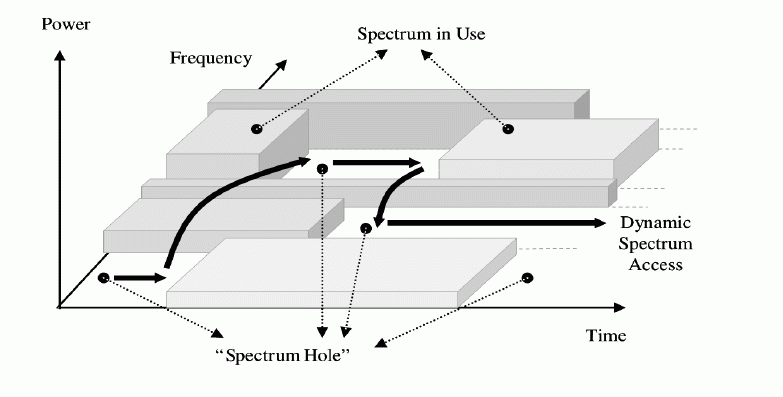 |
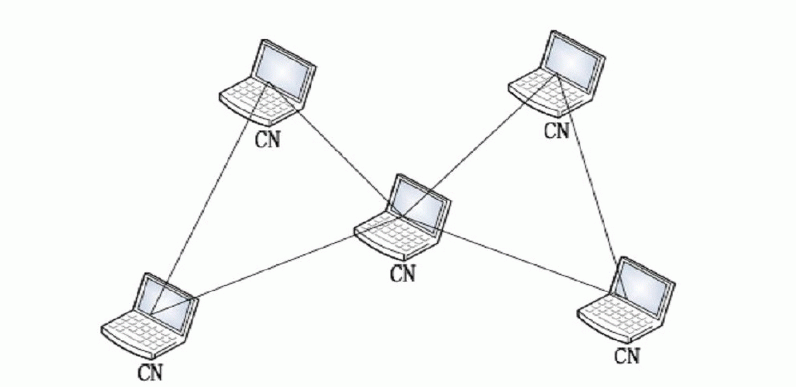 |
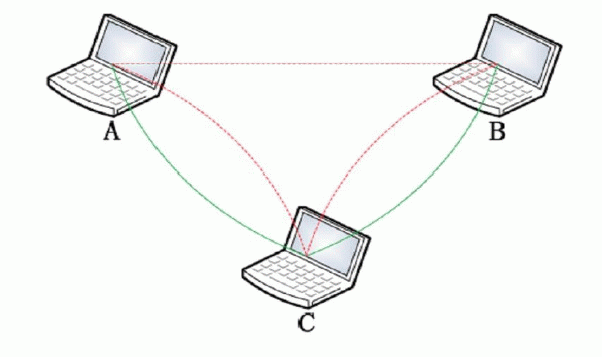 |
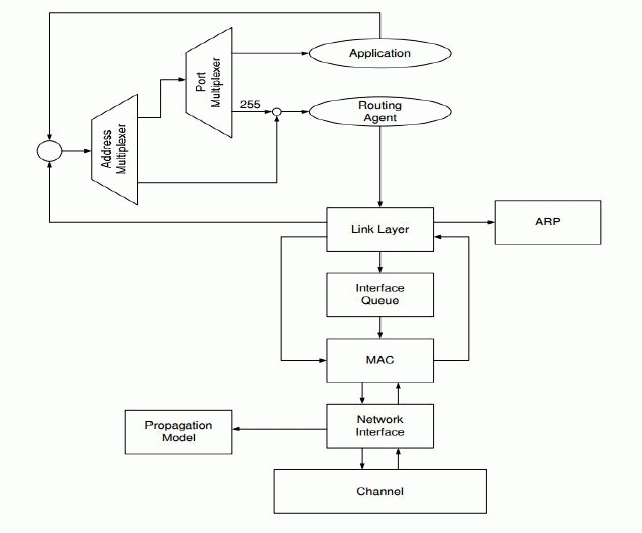 |
| Figure 1 |
Figure 2 |
Figure 3 |
Figure 4 |
 |
 |
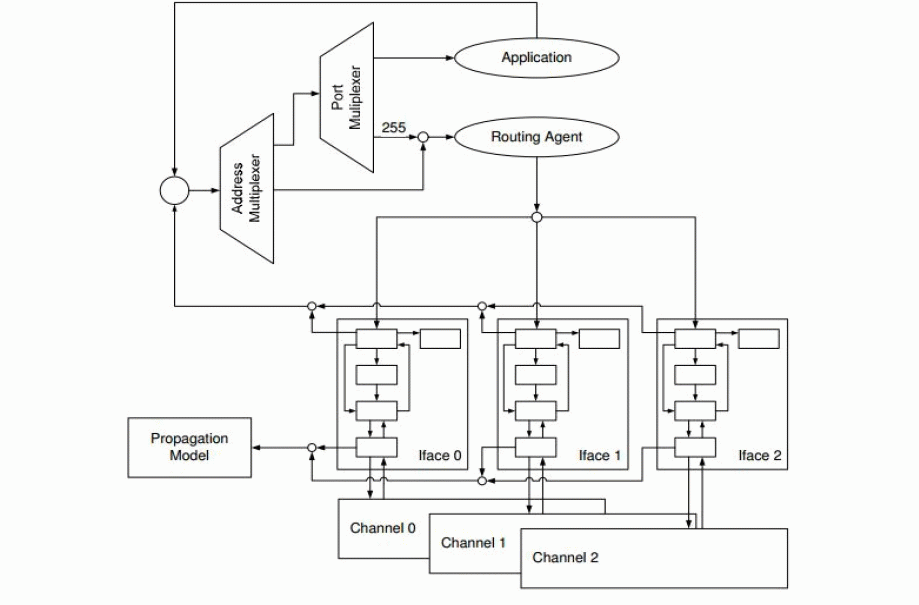 |
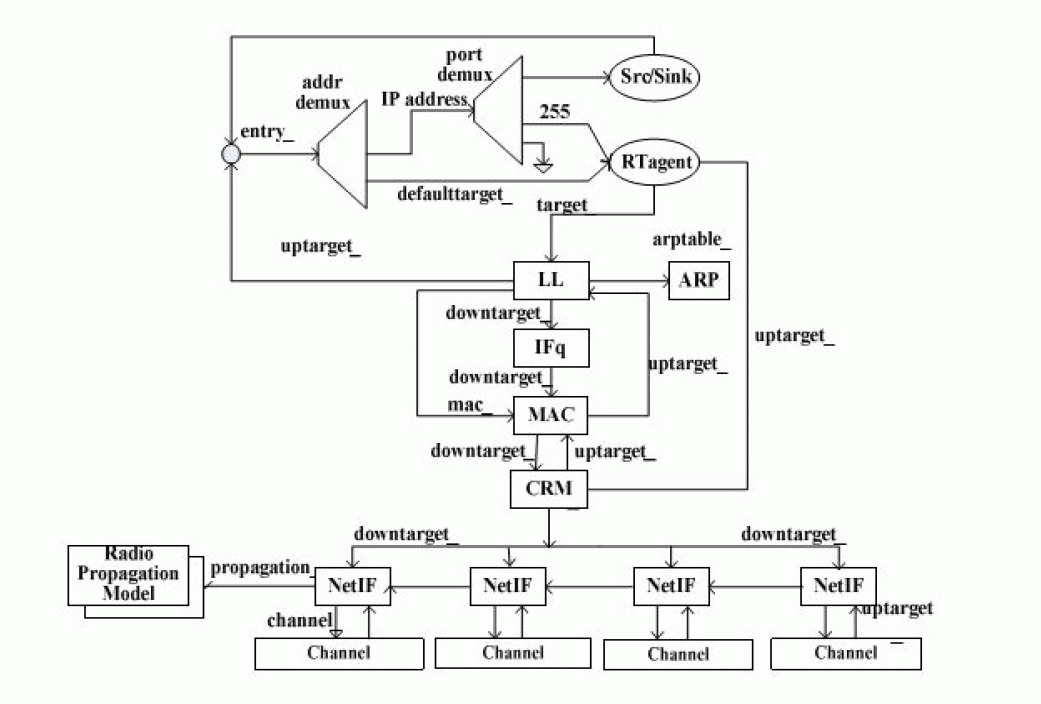 |
| Figure 5 |
Figure 6 |
Figure 7 |
Figure 8 |
|
| |
References
|
- M. McHenry, “Spectrum white space measurements,” in Presentation to New American Foundation, Broadband Forum, June 2003. http://www.newamerica.net/files/nafmigration/archive/Doc_File_185_1.pd
- Communications Commission (FCC). (2008,November) FCC Adopts Rules for Unlicensed Use of Television White Spaces, ET Docket No.08-260 A1.pdf.
- I. F. Akyildiz, W. Y. Lee, M. C. Vuran and M.Shantidev,“ Nextgeneration / dynamic spectrum access/cognitive radio wireless networks: asurvey,” Computer Networks, vol. 50, no. 1, pp. 2127–2159, May, 2006
- S. Haykin, Cognitive radio: brain-empowered wireless communications, IEEE Journal on Selected Areas in Communications 23 (2) (2005)201–220
- IEEE Xplore-CAODV “routing in mobile ad-hoc cognitive radio” ieeexplore.ieee.org, wireless days 2010 IFIP.
- D.P.Patil and V.M.Wadhai, “NS2 based Advanced Routing Model for Cognitive Radio Networks from Dynamic Spectrum Management Perception,” IEEE Students’ Conference on Electrical, Electronics and Computer Science 2014
- I. F. Akyildiz, W.Y. Lee, M. C. Vuran, and S. Mohanty,“ A Survey on Spectrum Management in Cognitive Radio Networks,” IEEECommunication Magzene,vol.46,no.4, pp. 40-48,April 2008.
- K.R. Chowdhury, M.D. Felice, “SEARCH: A routing protocol for mobile cognitive radio ad-hoc networks,” Computer Communications(Elsevier) Journal, Vol.32, no.18, pp.1983-1997, December 2009.
- P.Lee, G.Wei, “NS2 Model for Cognitive Radio Networks Routing”, International Symposium on Computer Networks and Multi-media Technology 009.CNMT2009.pp1-4, doi:10.1109/CNMT.2009.5374689.
- R.W. Broadersen, A. Wolisz, D. Cabric, et al. CORVUS, “A Cognitive Radio Approach for Virtual Unlicensed Spectrum,” Berkeley WirelessResearch Center (BWRC), white paper, July 2004.
- R. A. Calvo and J.P. Campo, “Adding Multiple Interface support in NS2,” Technical Report, university of Cantabria, January 2007.
- Bo Wang, “NS2 Notebook: Multi-channel Multi-interface Simulation in NS2 (2.29).”
- M.A. Haleem and R. Chandramouli. ÃÅÃÅAdaptive downlink scheduling and rate selection: A cross-layer designÃÅÃÂ . IEEE Journal on Selected Areasin Communications, 23(6):1287ÃÅÃâ1297, 2005.
|